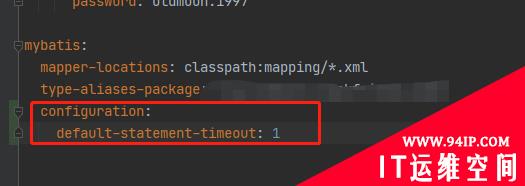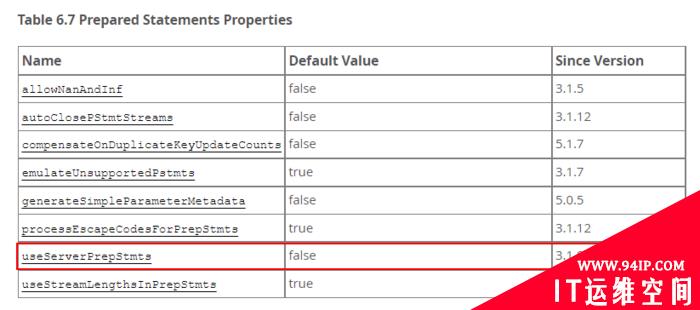HBase和Solr可以通过协处理器Coprocessor的方式向Solr发出请求,Solr对于接收到的数据可以做相关的同步:增、删、改索引的操作。将存储与索引放在不同的机器上,这是大数据架构的必须品,但目前还有很多不懂得此道的同学,他们对于这种思想感到很新奇,不过,这绝对是好的方向,所以不懂得抓紧学习吧。
有个朋友给我的那篇博客留言,说CDH也可以做这样的事情,我还没有试过,他还问我要与此相关的代码,于是我就稍微整理了一下,作为本篇文章的主要内容。关于CDH的事,我会尽快尝试,有知道的同学可以给我留言。
下面我主要讲述一下,我测试对HBase和Solr的性能时,使用HBase协处理器向HBase添加数据所编写的相关代码,及解释说明。
一、编写HBase协处理器Coprocessor
一旦有数据postPut,就立即对Solr里相应的Core更新。这里使用了ConcurrentUpdateSolrServer,它是Solr速率性能的保证,使用它不要忘记在Solr里面配置autoCommit哟。
/*
*版权:王安琪
*描述:监视HBase,一有数据postPut就向Solr发送,本类要作为触发器添加到HBase
*修改时间:2014-05-27
*修改内容:新增
*/
packagesolrHbase.test;
importjava.io.UnsupportedEncodingException;
import***;
publicclassSorlIndexCoprocessorObserverextendsBaseRegionObserver{
privatestaticfinalLoggerLOG=LoggerFactory
.getLogger(SorlIndexCoprocessorObserver.class);
privatestaticfinalStringsolrUrl="http://192.1.11.108:80/solr/core1";
privatestaticfinalSolrServersolrServer=newConcurrentUpdateSolrServer(
solrUrl,10000,20);
/**
*建立solr索引
*
*@throwsUnsupportedEncodingException
*/
@Override
publicvoidpostPut(finalObserverContext<RegionCoprocessorEnvironment>e,
finalPutput,finalWALEditedit,finalbooleanwriteToWAL)
throwsUnsupportedEncodingException{
inputSolr(put);
}
publicvoidinputSolr(Putput){
try{
solrServer.add(TestSolrMain.getInputDoc(put));
}catch(Exceptionex){
LOG.error(ex.getMessage());
}
}
}
注意:getInputDoc是这个HBase协处理器Coprocessor的精髓所在,它可以把HBase内的Put里的内容转化成Solr需要的值。其中StringfieldName=key.substring(key.indexOf(columnFamily)+3,key.indexOf("我在这")).trim();这里有一个乱码字符,在这里看不到,请大家注意一下。
publicstaticSolrInputDocumentgetInputDoc(Putput){
SolrInputDocumentdoc=newSolrInputDocument();
doc.addField("test_ID",Bytes.toString(put.getRow()));
for(KeyValuec:put.getFamilyMap().get(Bytes.toBytes(columnFamily))){
Stringkey=Bytes.toString(c.getKey());
Stringvalue=Bytes.toString(c.getValue());
if(value.isEmpty()){
continue;
}
StringfieldName=key.substring(key.indexOf(columnFamily)+3,
key.indexOf("")).trim();
doc.addField(fieldName,value);
}
returndoc;
}
二、编写测试程序入口代码main
这段代码向HBase请求建了一张表,并将模拟的数据,向HBase连续地提交数据内容,在HBase中不断地插入数据,同时记录时间,测试插入性能。
/*
*版权:王安琪
*描述:测试HBaseInsert,HBase插入性能
*修改时间:2014-05-27
*修改内容:新增
*/
packagesolrHbase.test;
importhbaseInput.HbaseInsert;
import***;
publicclassTestHBaseMain{
privatestaticConfigurationconfig;
privatestaticStringtableName="angelHbase";
privatestaticHTabletable=null;
privatestaticfinalStringcolumnFamily="wanganqi";
/**
*@paramargs
*/
publicstaticvoidmain(String[]args){
config=HBaseConfiguration.create();
config.set("hbase.zookeeper.quorum","192.103.101.104");
HbaseInsert.createTable(config,tableName,columnFamily);
try{
table=newHTable(config,Bytes.toBytes(tableName));
for(intk=0;k<1;k++){
Threadt=newThread(){
publicvoidrun(){
for(inti=0;i<100000;i++){
HbaseInsert.inputData(table,
PutCreater.createPuts(1000,columnFamily));
Calendarc=Calendar.getInstance();
StringdateTime=c.get(Calendar.YEAR)+"-"
+c.get(Calendar.MONTH)+"-"
+c.get(Calendar.DATE)+"T"
+c.get(Calendar.HOUR)+":"
+c.get(Calendar.MINUTE)+":"
+c.get(Calendar.SECOND)+":"
+c.get(Calendar.MILLISECOND)+"Z写入:"
+i*1000;
System.out.println(dateTime);
}
}
};
t.start();
}
}catch(IOExceptione1){
e1.printStackTrace();
}
}
}
下面的是与HBase相关的操作,把它封装到一个类中,这里就只有建表与插入数据的相关代码。
/*
*版权:王安琪
*描述:与HBase相关操作,建表与插入数据
*修改时间:2014-05-27
*修改内容:新增
*/
packagehbaseInput;
import***;
importorg.apache.hadoop.hbase.client.Put;
publicclassHbaseInsert{
publicstaticvoidcreateTable(Configurationconfig,StringtableName,
StringcolumnFamily){
HBaseAdminhBaseAdmin;
try{
hBaseAdmin=newHBaseAdmin(config);
if(hBaseAdmin.tableExists(tableName)){
return;
}
HTableDescriptortableDescriptor=newHTableDescriptor(tableName);
tableDescriptor.addFamily(newHColumnDescriptor(columnFamily));
hBaseAdmin.createTable(tableDescriptor);
hBaseAdmin.close();
}catch(MasterNotRunningExceptione){
e.printStackTrace();
}catch(ZooKeeperConnectionExceptione){
e.printStackTrace();
}catch(IOExceptione){
e.printStackTrace();
}
}
publicstaticvoidinputData(HTabletable,ArrayList<Put>puts){
try{
table.put(puts);
table.flushCommits();
puts.clear();
}catch(IOExceptione){
e.printStackTrace();
}
}
}
三、编写模拟数据Put
向HBase中写入数据需要构造Put,下面是我构造模拟数据Put的方式,有字符串的生成,我是由mmseg提供的词典words.dic中随机读取一些词语连接起来,生成一句字符串的,下面的代码没有体现,不过很easy,你自己造你自己想要的数据就OK了。
publicstaticPutcreatePut(StringcolumnFamily){
Stringss=getSentence();
byte[]family=Bytes.toBytes(columnFamily);
byte[]rowKey=Bytes.toBytes(""+Math.abs(r.nextLong()));
Putput=newPut(rowKey);
put.add(family,Bytes.toBytes("DeviceID"),
Bytes.toBytes(""+Math.abs(r.nextInt())));
******
put.add(family,Bytes.toBytes("Company_mmsegsm"),Bytes.toBytes("ss"));
returnput;
}
当然在运行上面这个程序之前,需要先在Solr里面配置好你需要的列信息,HBase、Solr安装与配置,它们的基础使用方法将会在之后的文章中介绍。在这里,Solr的列配置就跟你使用createPut生成的Put搞成一样的列名就行了,当然也可以使用动态列的形式。
四、直接对Solr性能测试
如果你不想对HBase与Solr的相结合进行测试,只想单独对Solr的性能进行测试,这就更简单了,完全可以利用上面的代码段来测试,稍微组装一下就可以了。
privatestaticvoidsendConcurrentUpdateSolrServer(finalStringurl,
finalintcount)throwsSolrServerException,IOException{
SolrServersolrServer=newConcurrentUpdateSolrServer(url,10000,20);
for(inti=0;i<count;i++){solrServer.add(getInputDoc(PutCreater.createPut(columnFamily)));
}
}
希望可以帮助到你规格严格-功夫到家。这次的文章代码又偏多了点,但代码是解释思想的***的语言,我的提倡就是尽可能的减少代码的注释,尽力简化你的代码,使你的代码足够的清晰易懂,甚至于相似于伪代码了,这也是《重构》这本书里所提倡的。
转载请注明:IT运维空间 » 运维技术 » 大数据架构-使用HBase和Solr配置存储与索引

![[Oracle]复习笔记-SQL部分内容](/zb_users/upload/2023/02/25/20230213095820-63ea09bc55070.jpg)
















发表评论